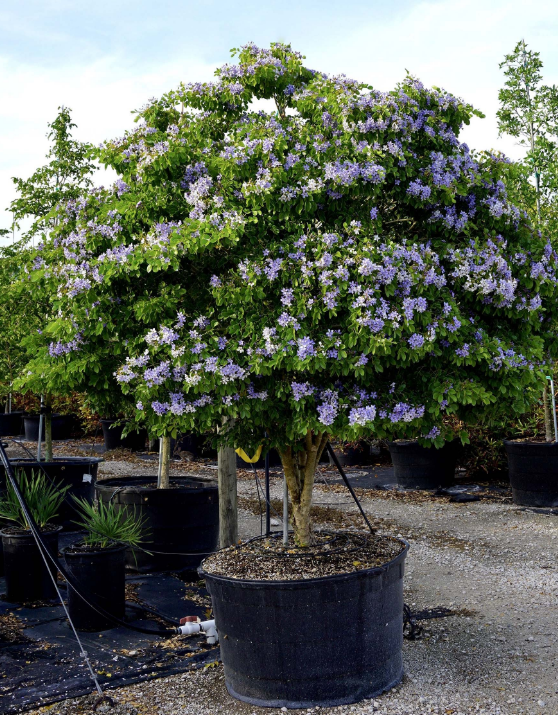Lignum Vitae (Guaiacum officinale) is a native tree to Florida and the Caribbean that is known for its extremely dense and strong wood with some specimens known to live up to 1000 years old. This tree can be grown in full to part shade and is able to tolerate a wide variety of soil conditions. The Lignum Vitae tree is very compact and slow growing and is often used as a street tree in tropical regions.
Characterized by its beautiful purple flowers that grow solitarily or in clusters, these flowers have five petals and are only a few centimeters across. The leaves of this broadleaf evergreen native tree are comprised of three to five pairs of dark green leaflets. During hot days these leaves will sometimes fold together to reduce water loss. The small yellow and orange berries provide a vital food resource for many species of bird.
The word ‘Lignum Vitae’ is Latin for ‘wood of life’ due to its historical use as a traditional medicine for people of the Caribbean. It was used for the treatment of arthritis, coughing, syphilis, gout, chronic rheumatism and is used in blood-purifying compounds. The resin of the tree acts as a stimulant and induces sweating. Its dense nature made it extremely popular in the sport of cricket. The lumber from this tree also found its way into shipbuilding, clock making, railroads, and even hydroelectric dams to name a few. Due to its historical popularity, in addition to the loss of its native habitat due to development and deforestation, this tree is listed as endangered by The World Conservation Union.
Support the effort to maintain this beautiful and fairly petite tropical tree by planting one in your yard. It will take decades to grow only about 10 feet or so, but it is a beautiful legacy tree that is worth preserving.
This column is a joint effort by all at In The Garden, Sanibel’s garden center, located at 3889 Sanibel Captiva Rd., Sanibel, Florida.
